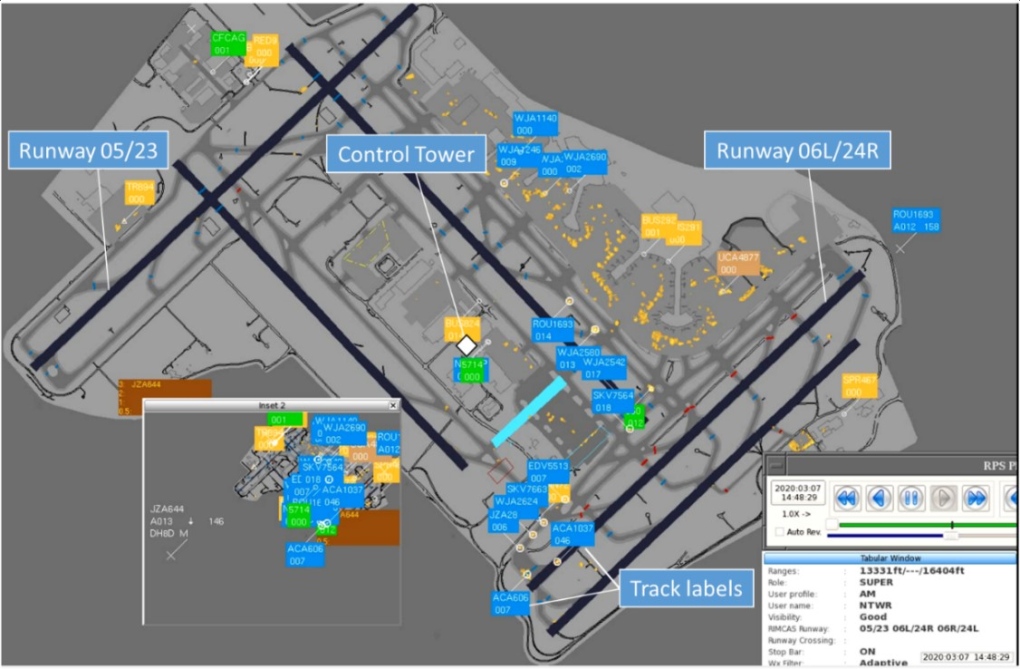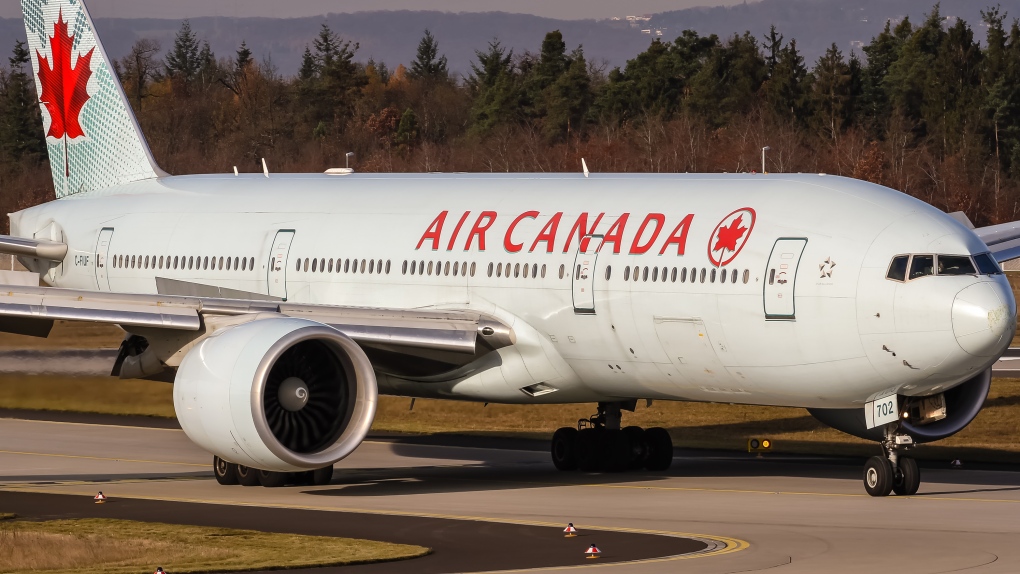Two Air Canada planes come at risk of colliding at Toronto Pearson after pilot misses radio call
Two Air Canada planes missed colliding at Toronto Pearson after the flight crew of a Boeing 777 and air traffic control missed a radio call saying another plane was still on the runway, a new report says.
The Transportation Safety Board of Canada (TSB) released a report on Tuesday into the March 2020 incident which the Board described as a "runway incursion and risk of collision" at Toronto Pearson.
According to the TSB report, an Air Canada Embraer 190 was taking off from Runway 06L just before 9:50 a.m. The plane, headed for Denver, was carrying 83 passengers and four crew members.
As the plane was taking off, an Air Canada Boeing 777 was instructed to line up on the same runway. On board the plane, which was going to Halifax, were 345 passengers and 14 crew members.
"As the Embraer 190 was accelerating on its take-off roll, it struck a bird," the TSB said. "The flight crew initiated a rejected takeoff and made a radio call to report that they were rejecting the takeoff."
The TSB said that the flight crew of the Boeing 777 and air traffic control missed the rejected take-off call from the Embraer 190 because at the same time the pilot of Boeing 777 was reading back its own take-off clearance on the same frequency.
"The controller issued a take-off clearance to the Boeing 777, unaware of the bird strike and the Embraer 190’s rejected takeoff," the report said.
The Boeing 777 began to accelerate.

"Over the next 25 seconds, the controller turned his attention to the north end of the airport, where two aircraft were on approach for Runway 05 … from his displays, he could see the Boeing 777 and the Embraer 190, but he saw no conflict at that time," the report said.
According to the report, the Boeing 777 flight crew reached a maximum speed of 231 km/h before noticing the other plane in front of it and rejected the take-off.
At that point, the separation between the two aircraft was 5,000 feet, the TSB said.
"The controller confirmed the rejected takeoff with the flight crew, still unaware of the Embraer 190’s presence on the runway, and waited to provide further assistance to the Boeing 777,” the report said. “After searching the expected position of the Embraer 190 (in the air, at the departure end of the runway), the controller saw the Embraer 190 on the runway, and realized that it had also conducted a rejected takeoff."
There were no injures or damage to either aircraft during the incident, the TSB said.
 Two Air Canada planes were using the same runway in March 2020 without knowing, a report found. (Flikr)
Two Air Canada planes were using the same runway in March 2020 without knowing, a report found. (Flikr)
"The investigation found that the Embraer 190's transponder transmitted that the aircraft was in air after the aircraft accelerated past 50 knots,” the report said. "As a result, although compliant with current standards, an inaccurate in-air status was transmitted while the aircraft remained on the ground during its take-off roll and rejected takeoff."
"The use of this data by NAV CANADA’s runway incursion monitoring and conflict alert sub-system (RIMCAS) led to the inaccurate identification of the Embraer 190 and the Boeing 777 as in air while these two aircraft were still on the ground. This resulted in late and inaccurate RIMCAS alerts and delayed the air traffic controller's response to the risk of collision."
The TSB said the risk was mitigated when the Boeing 777 flight crew rejected their takeoff.
CTVNews.ca Top Stories

Fall sitting bookended by Liberal byelection losses ends with Trudeau government in tumult
The House of Commons adjourned on Tuesday, bringing an end to an unstable fall sitting that has been bookended by Liberal byelection losses. The conclusion of the fall sitting comes as Prime Minister Justin Trudeau's minority government is in turmoil.
2 B.C. police officers charged with sexual assault
Two officers with a Vancouver Island police department have been charged with the sexual assault of a "vulnerable" woman, authorities announced Tuesday.
Canadian government announces new border security plan amid Donald Trump tariff threats
The federal government has laid out a five-pillared approach to boosting border security, though it doesn't include specifics about where and how the $1.3-billion funding package earmarked in the fall economic statement will be allocated.
B.C. teacher disciplined for refusing to let student use bathroom
A teacher who refused to let a student use the bathroom in a B.C. school has been disciplined by the province's professional regulator.
Most Canadians have heard about Freeland's resignation from Trudeau cabinet, new poll finds
The majority of Canadians heard about Chrystia Freeland's surprise resignation from Prime Minister Justin Trudeau's cabinet, according to a new poll from Abacus Data released Tuesday.
Police chief says motive for Wisconsin school shooting was a 'combination of factors'
Investigators on Tuesday are focused on trying to determine a motive in a Wisconsin school shooting that left a teacher and a student dead and two other children in critical condition.
After investigating Jan. 6, House GOP sides with Trump and goes after Liz Cheney
Wrapping up their own investigation on the Jan. 6 2021 Capitol attack, House Republicans have concluded it's former GOP Rep. Liz Cheney who should be prosecuted for probing what happened when then-President Donald Trump sent his mob of supporters as Congress was certifying the 2020 election.
Wine may be good for the heart, new study says, but experts aren’t convinced
Drinking a small amount of wine each day may protect the heart, according to a new study of Spanish people following the plant-based Mediterranean diet, which typically includes drinking a small glass of wine with dinner.
The Canada Post strike is over, but it will take time to get back to normal, says spokesperson
Canada Post workers are back on the job after a gruelling four-week strike that halted deliveries across the country, but it could take time before operations are back to normal.


































